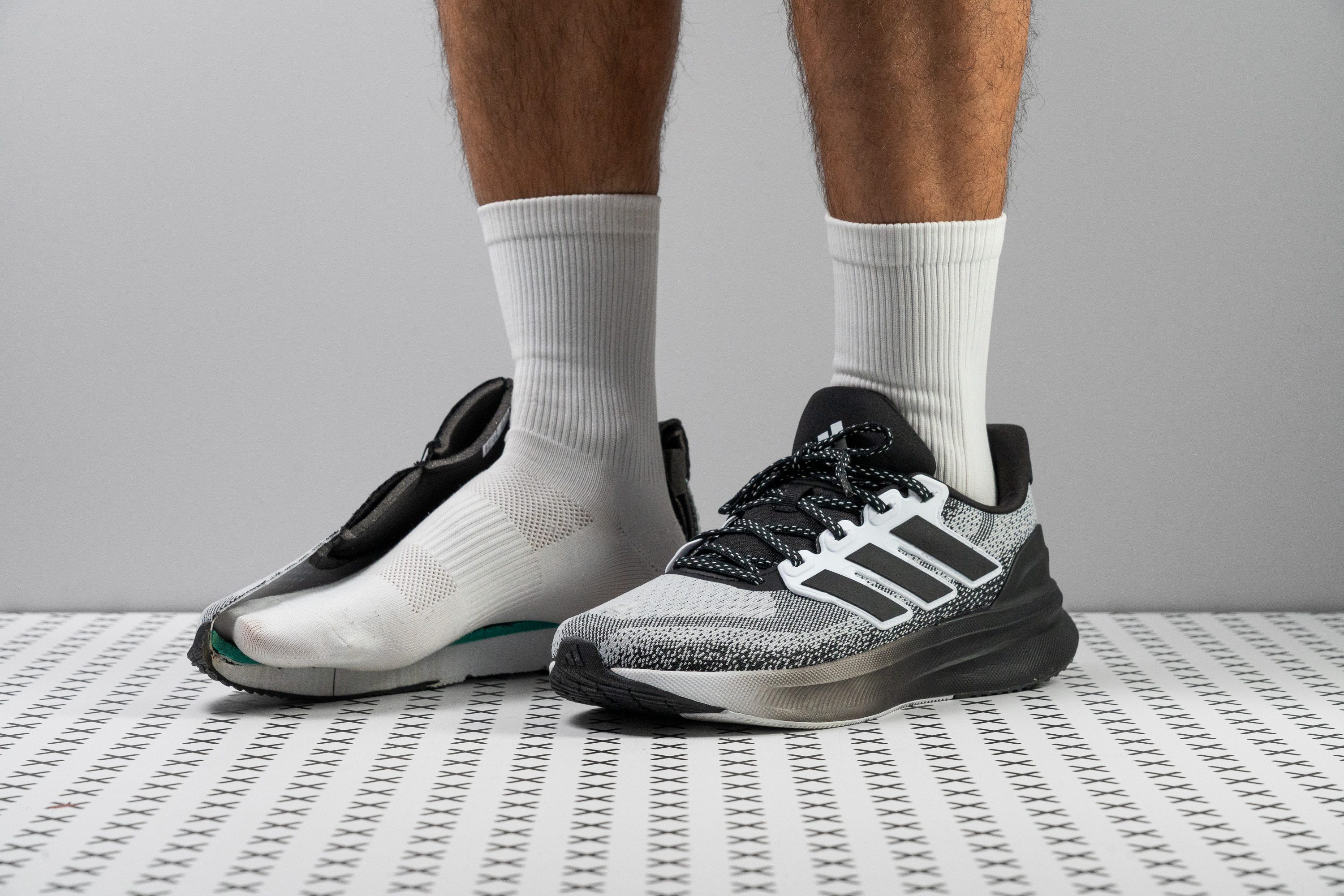Nuestra conclusión
Pros
- Una opción fantástica para principiantes
- Asequibles
- Duraderas
- También sirven como sneakers
- Cómodas
- Buen agarre
- Estética inspirada en las Ultraboost
- Estables para los talonadores
Contras
- Se sienten voluminosas y pesadas en los pies
- Pisada sin energía
- Dan un poco más de calor de lo que nos gustaría
Veredicto de los usuarios
Comparativa
Las zapatillas de running más parecidas
+ + Añadir unas zapatillas | |||||
|---|---|---|---|---|---|
| Puntuación global | 84 Buenas | 82 Buenas | 85 Buenas | 81 Buenas | |
| Precio | 80 € | 60 € | 60 € | 80 € | |
| Pace | Correr a diario | Correr a diario | Correr a diario | Correr a diario | |
| Absorción de impactos | Moderada | Moderada | Moderada | Baja | |
| Retorno de energía | Bajo | Bajo | Bajo | Bajo | |
| Tracción | Moderada | Alta | Baja | Moderada | |
| Arch support | Neutral | Neutral | Neutral | Neutral | |
| Peso laboratorio Peso marca | 10.4 oz / 295g 11.4 oz / 323g | 10.4 oz / 295g 10 oz / 284g | 9.7 oz / 275g 10.7 oz / 303g | 10.5 oz / 298g 9.9 oz / 280g | |
| Drop laboratorio Drop marca | 9.5 mm 10.0 mm | 9.0 mm 8.0 mm | 9.4 mm 10.0 mm | 9.4 mm 10.0 mm | |
| Técnica de carrera | TalónMedio/antepié | TalónMedio/antepié | TalónMedio/antepié | TalónMedio/antepié | |
| Talla | Tallan bien | Tallan un poquito pequeño | Tallan bien | Tallan un poquito pequeño | |
| Rigidez de la mediasuela | Equilibrada | Equilibrada | Equilibrada | Firme | |
| Diferencia de la rigidez de la mediasuela en frío | Normal | Pequeña | Pequeña | Pequeña | |
| Durabilidad de la parte delantera | Buena | Decente | Mala | Mala | |
| Durabilidad del acolchado del talón | Alta | Media | Baja | Baja | |
| Durabilidad de la suela exterior | Decente | Buena | Decente | - | |
| Transpirabilidad | Media | Media | Media | Media | |
| Anchura / ajuste | Media | Ancha | Ancha | Media | |
| Anchura de la parte delantera | Media | Media | Media | Media | |
| Flexibilidad | Moderada | Moderada | Moderada | Moderada | |
| Rigidez torsional | Moderadas | Rígidas | Flexibles | Moderadas | |
| Rigidez del contrafuerte del talón | Moderado | Moderado | Moderado | Moderado | |
| Talón laboratorio Talón marca | 34.3 mm 35.0 mm | 33.5 mm | 31.2 mm 33.0 mm | 32.0 mm | |
| Antepié laboratorio Antepié marca | 24.8 mm 25.0 mm | 24.5 mm | 21.8 mm 23.0 mm | 22.6 mm | |
| Anchuras disponibles | Estándar | EstándarAnchoExtra Ancho | EstándarAncho | EstándarAnchoExtra Ancho | |
| Orthotic friendly | ✓ | ✓ | ✓ | ✓ | |
| Estación | Todas las estaciones | Todas las estaciones | Todas las estaciones | Todas las estaciones | |
| Removable insole | ✓ | ✓ | ✓ | ✓ | |
| Clasificación | #238 35% inferior | #281 24% inferior | #203 45% inferior | #287 22% inferior | |
| Popularidad | #198 46% inferior | #249 32% inferior | #149 Top 41% | #101 Top 28% |
Who should buy
The Adidas Ultrarun 5 is a great option for:
- New runners who want a comfort-focused, budget-friendly shoe.
- Ultraboost fans who love the look but prefer a more wallet-friendly alternative—the Ultrarun 5 mirrors the design at a fraction of the cost.
- Heel strikers seeking a cushioned, daily trainer that doesn’t break the bank.
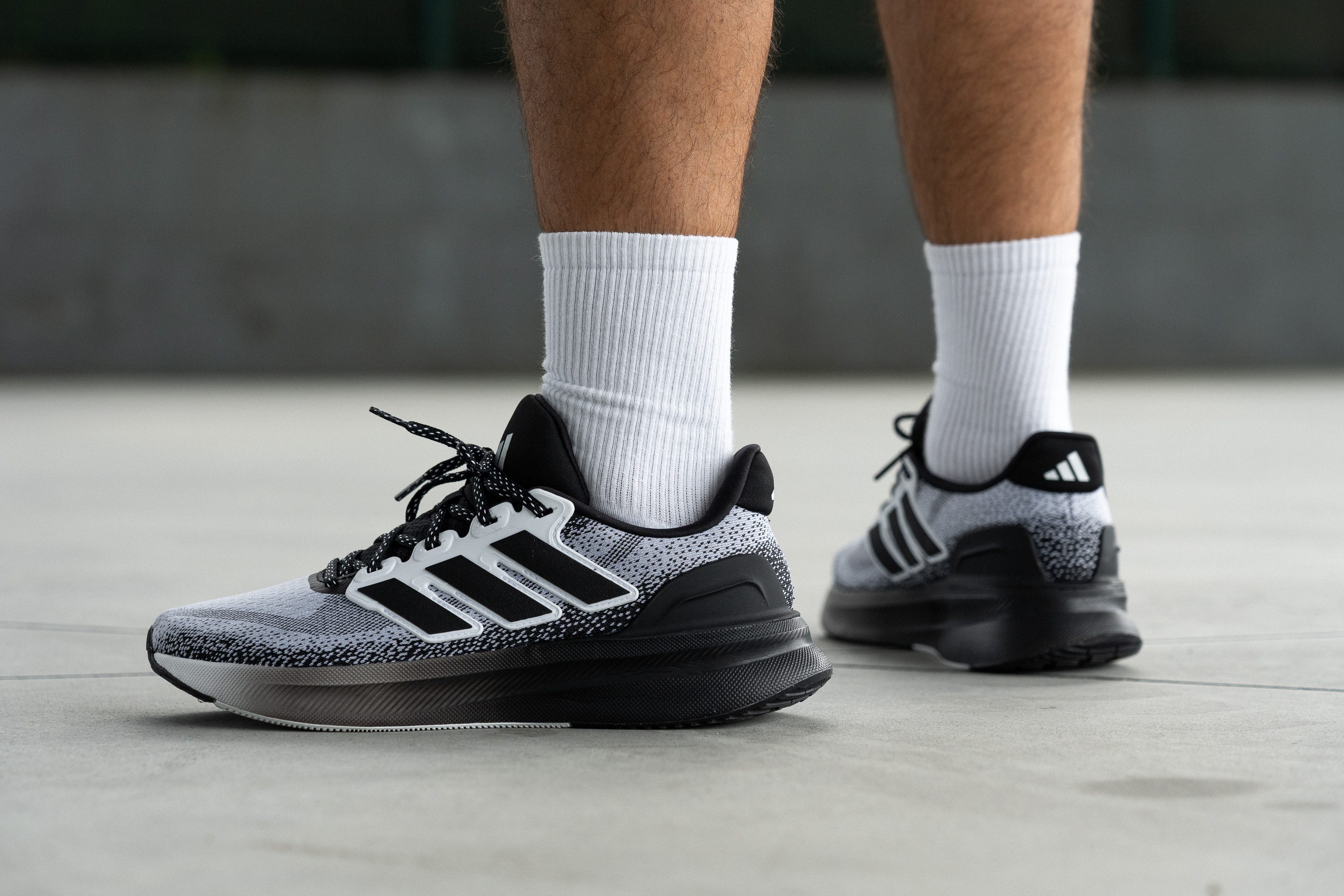
Who should NOT buy
We believe that the Ultrarun 5 isn’t the right pick for runners seeking a responsive ride. While the design mirrors the Ultraboost 5, we found its foam a bit flat, lacking the rebound of its premium sibling and also falling short of the lively ride in shoes like the ASICS Novablast 5. Both cost more, but if you're after energy return, they're worth the extra investment.
Additionally, the heavy build of this shoe holds it back. In our view, there are some feather-light, budget-friendly options that feel much more agile, like the Nike Interact Run or the ASICS Gel Pulse 15.
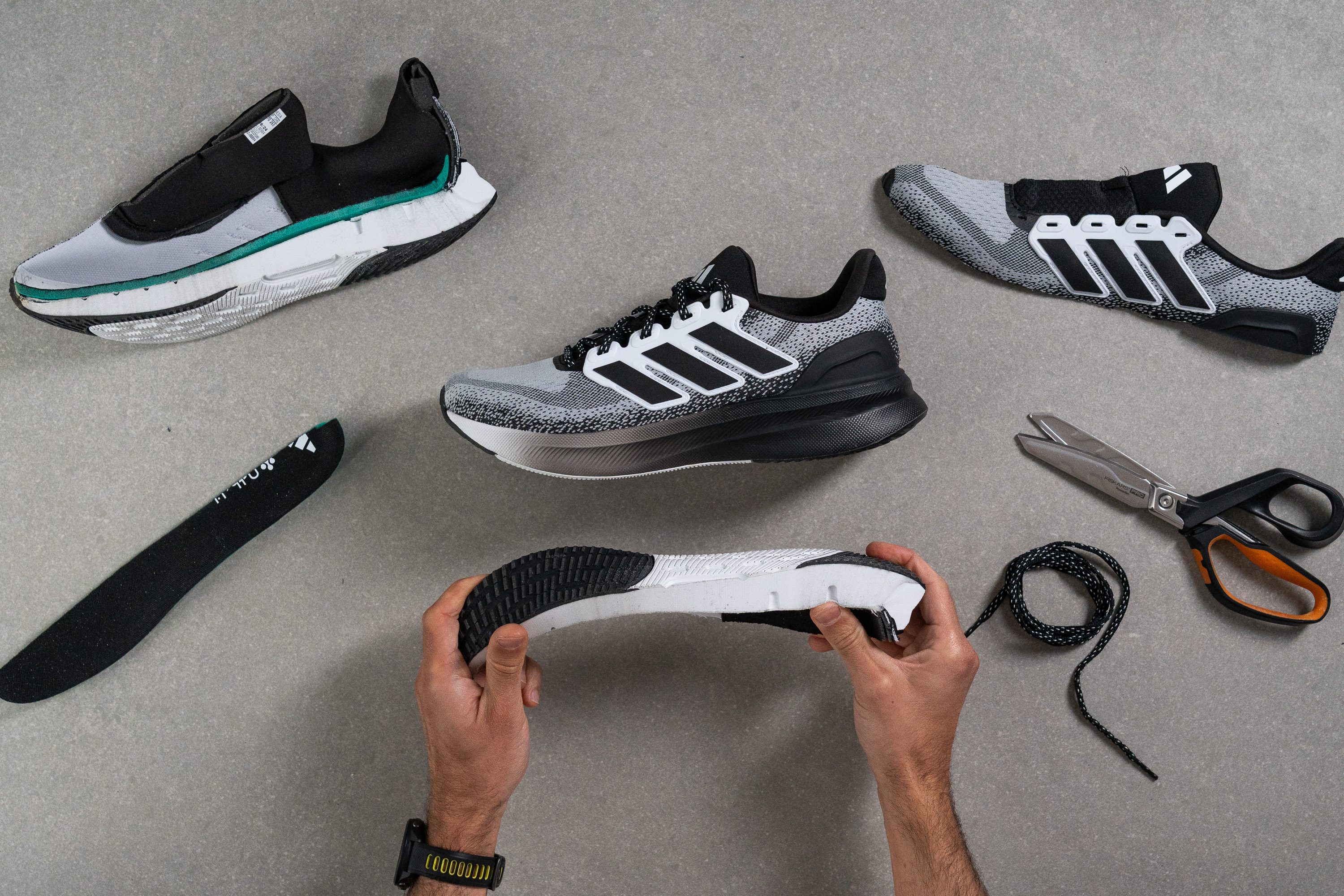
Amortiguación
Shock absorption
The Ultrarun 5 delivers below-average shock absorption compared to most daily trainers, scoring just 110 SA in the heel and 88 SA in the forefoot. Is that a dealbreaker? Not really, if your runs stay under an hour. Otherwise...
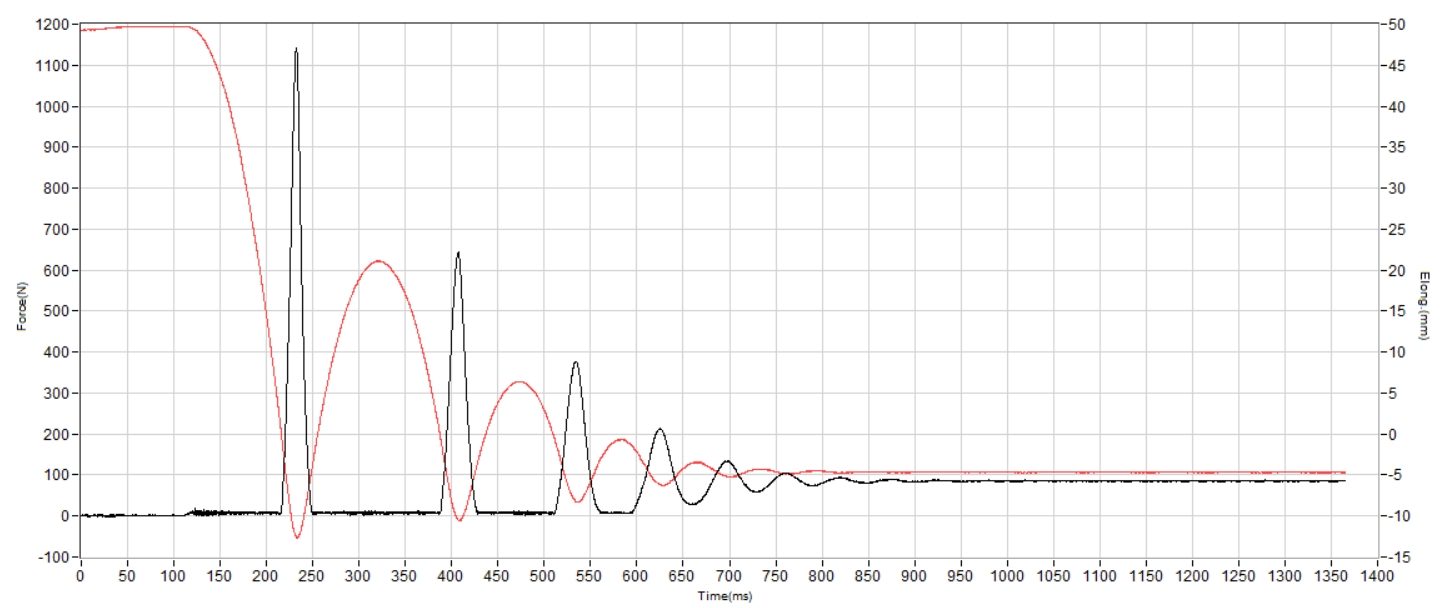
| Ultrarun 5 | 110 SA |
| Media | 129 SA |
Energy return
We also found the energy return to be on the low side, with just 51.6%. Still, that’s no shock—most budget-friendly daily trainers land in this range because of their EVA foam construction.
If you’re after serious bounce, you’ll need to look at pricier options.
| Ultrarun 5 | 51.6% |
| Media | 58.6% |
Altura de la suela en la zona del talón
The Adidas Ultrarun 5 is a beginner-friendly running shoe, and we think Adidas played it smart by keeping the stack height close to average instead of going extreme.
With 34.3 mm in the heel, it delivers enough cushion to handle occasional long runs while staying suitable for everyday training.
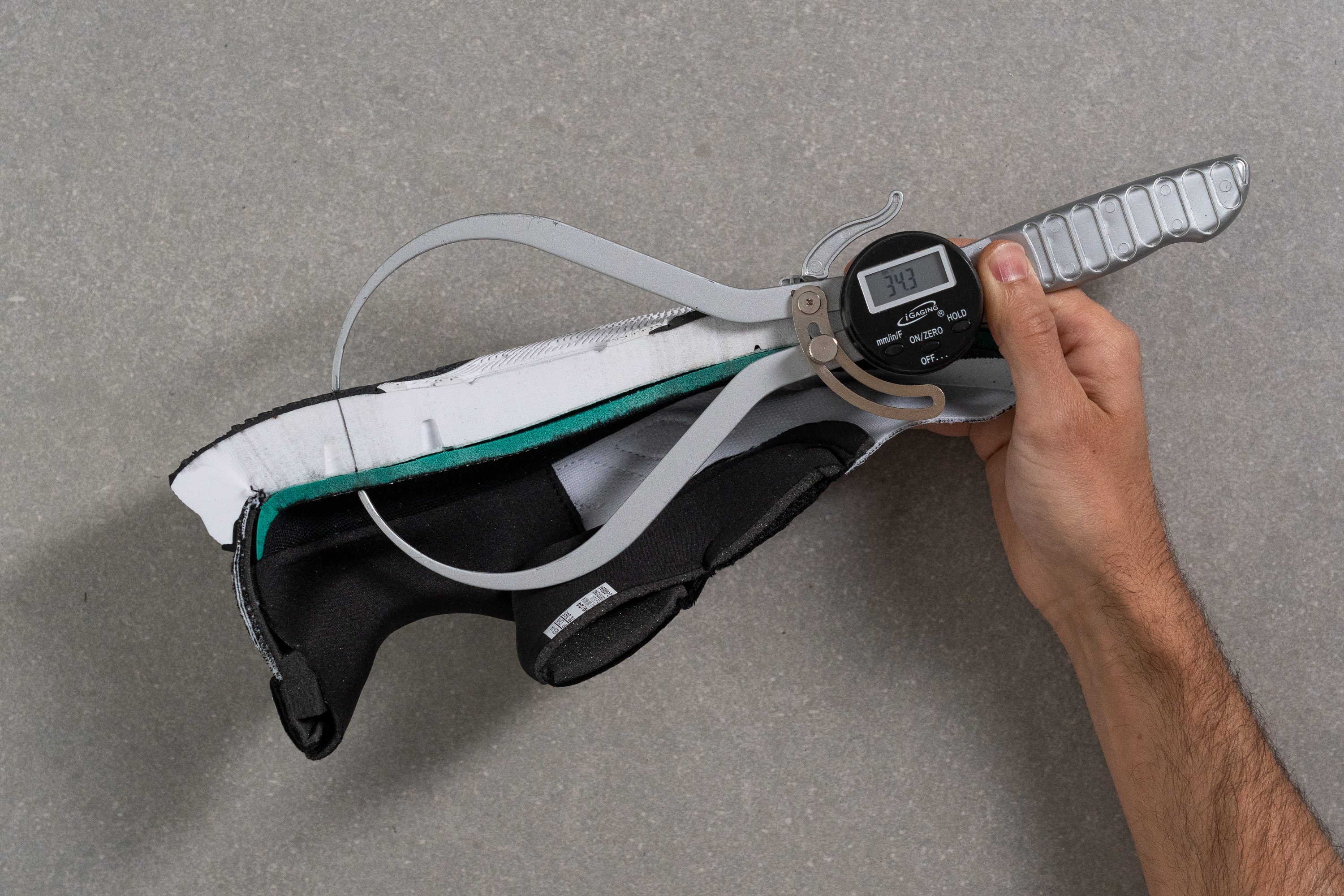
| Ultrarun 5 | 34.3 mm |
| Media | 34.8 mm |
Altura de la suela en el antepié
The forefoot packs 24.8 mm of total stack—including insole, foam, and outsole—which might feel slightly limited for long runs but offers more than enough for daily runs, recovery sessions, and most moderate workouts.
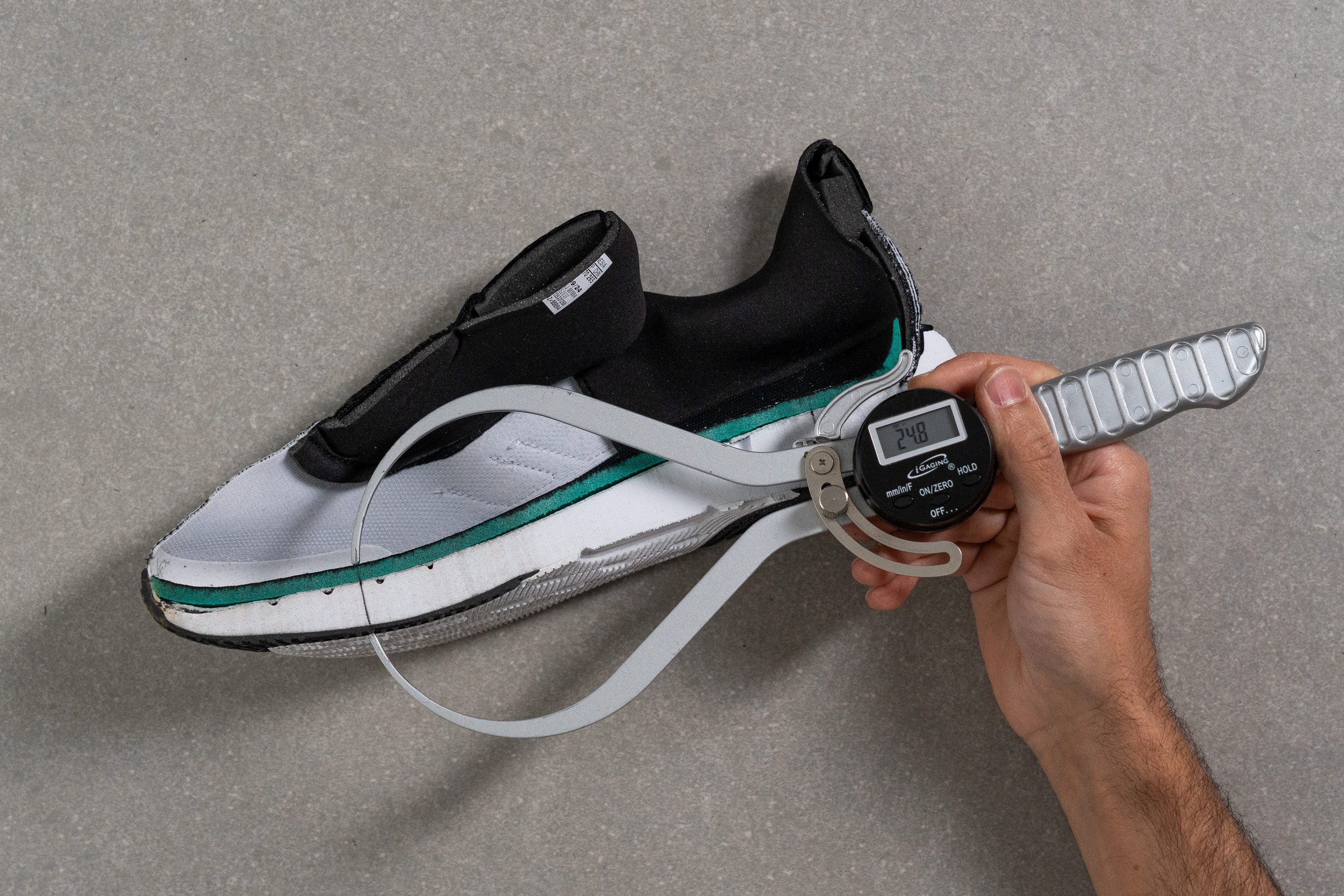
| Ultrarun 5 | 24.8 mm |
| Media | 26.2 mm |
Drop
That leaves us with a real 9.5-mm drop—very close to the 10-mm stated by Adidas. Since this model is basically a budget-minded sibling of the Ultraboost 5, we expected this kind of high-drop geometry focused on heel strikers.
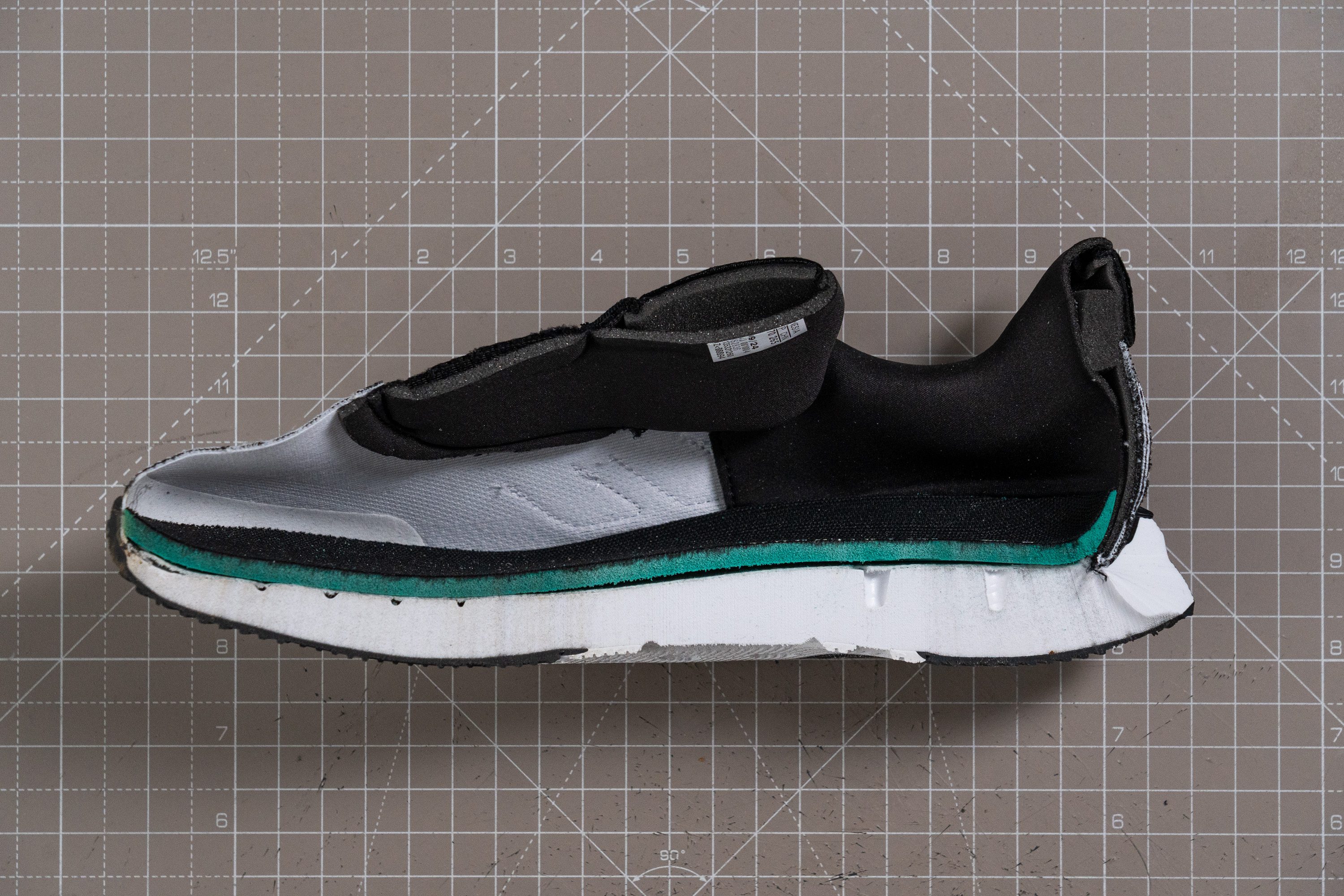
| Ultrarun 5 | 9.5 mm |
| Media | 8.6 mm |
Suavidad de la mediasuela
Aside from price, the biggest difference between the Ultraboost 5 and the Ultrarun 5 is the midsole. There's no Light Boost or premium foam here—just the EVA-based Bounce 2.0.
We tested it and measured a firm ride at 23.5 HA. However, we think this makes sense for a beginner-friendly model like this one, as firmer setups often provide a more stable feel.
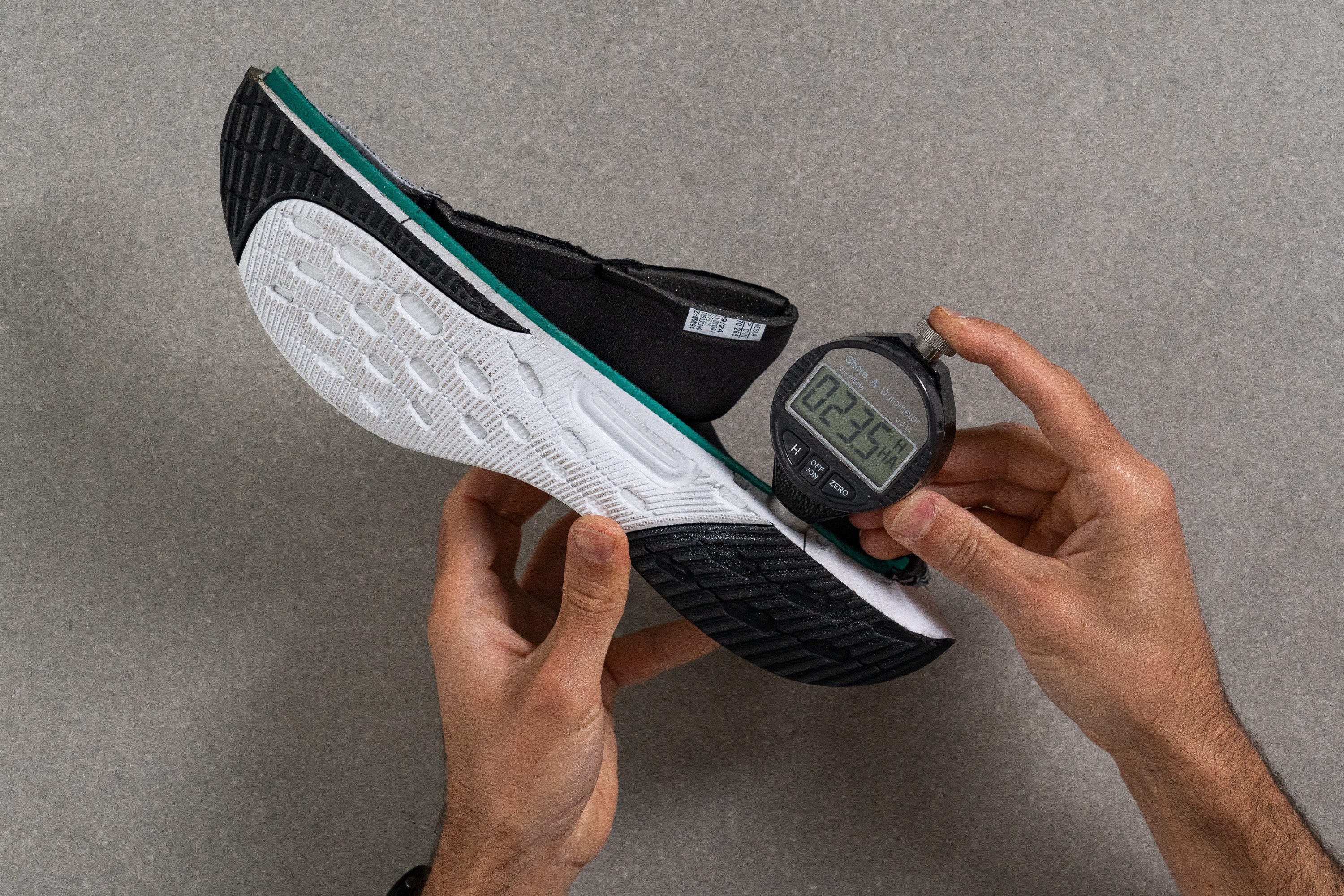
| Ultrarun 5 | 23.5 HA |
| Media | 20.4 HA |
Rocker
We discovered that Adidas went with a low-rocker design in the Ultrarun 5, something that matches the shoe’s nature.

This flat-and-steady geometry felt ideal for relaxed sessions and slow-paced walks, making it a smart pick for weekend runners.
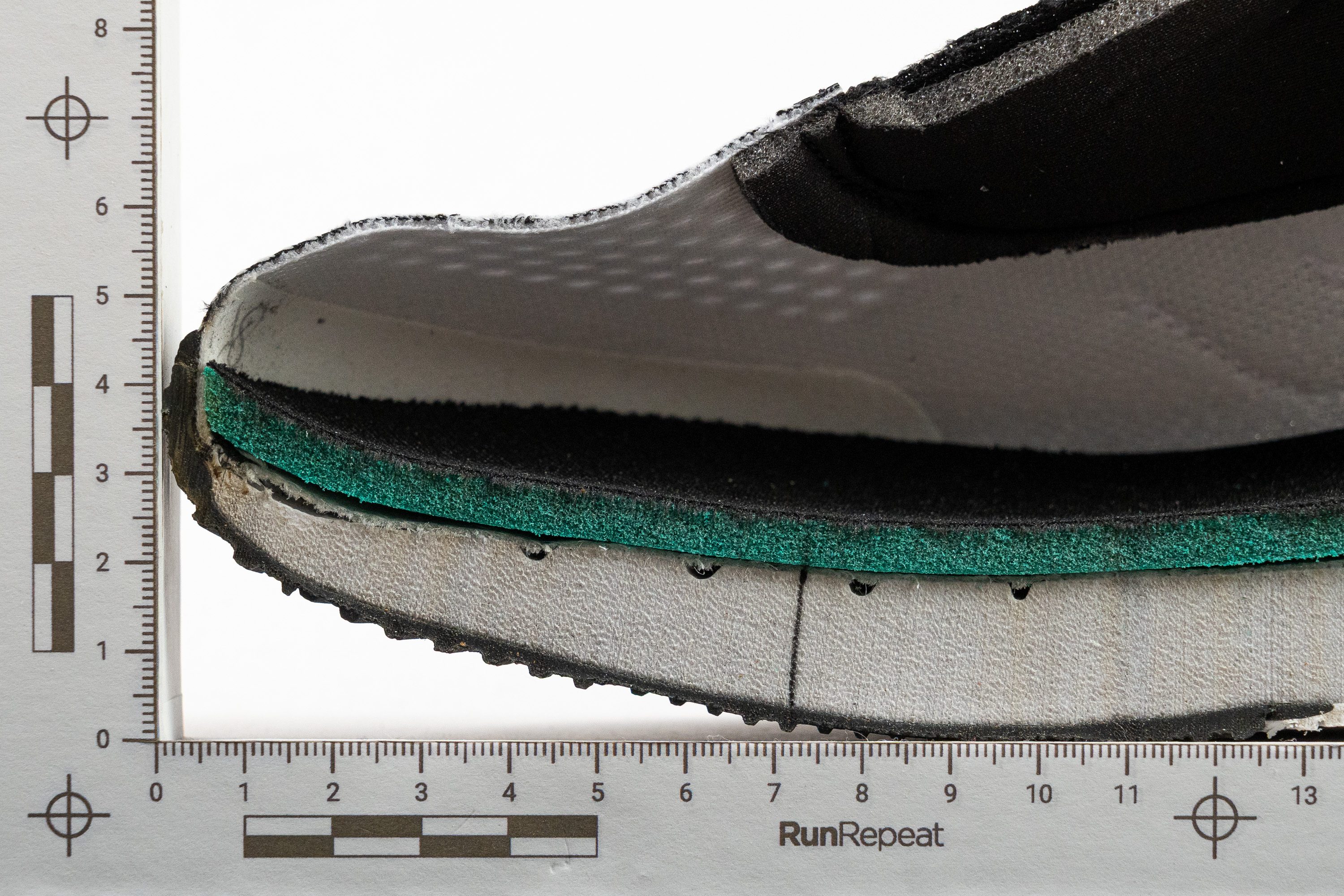
Tallaje y ajuste
Talla
Las Adidas Ultrarun 5 tallan bien (37 votos).
Anchura / Ajuste
We found in the lab that the width measures 97.6 mm, significantly wider than the average road model.
While it might not fully suit ultra-wide feet, we think this generous toe area creates a comfort-driven fit for the vast majority of runners.
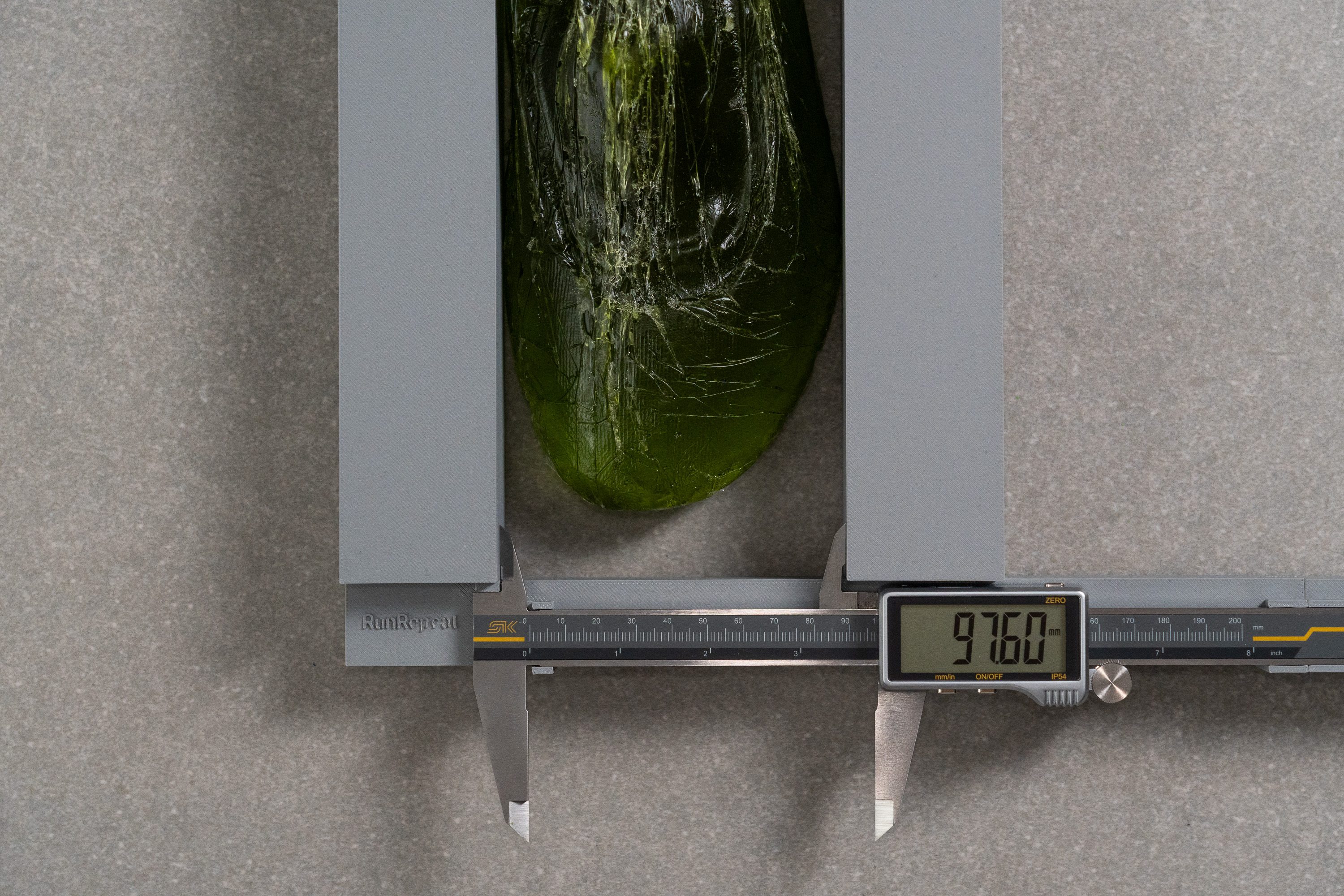
| Ultrarun 5 | 97.6 mm |
| Media | 95.1 mm |
Anchura de la parte delantera
Some shoes compromise comfort with a sharply tapered toebox, but not the Ultrarun 5.
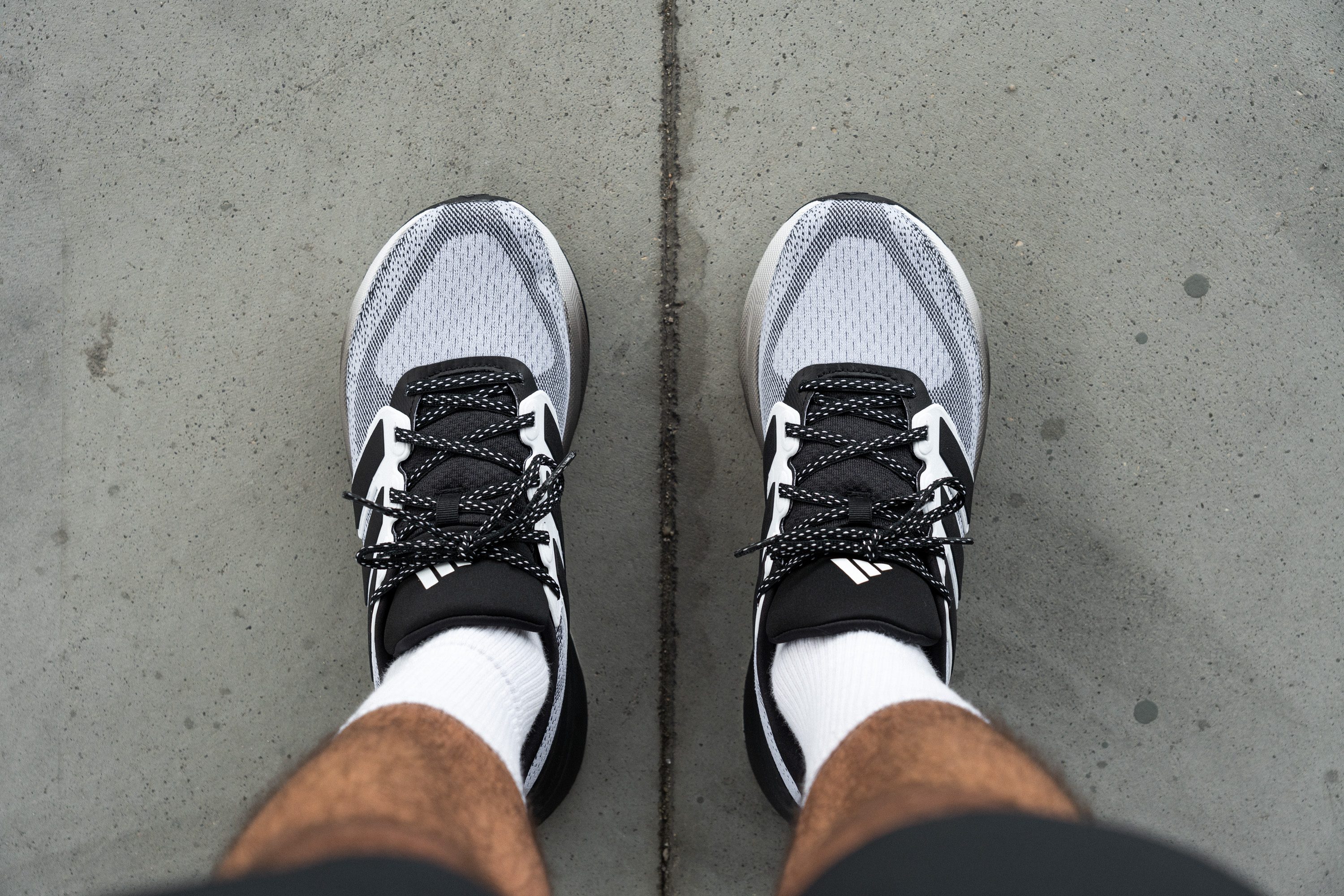
We measured a roomy 74.7 mm up front, which gives it an everyday-ready shape that won’t squeeze or crowd your toes.
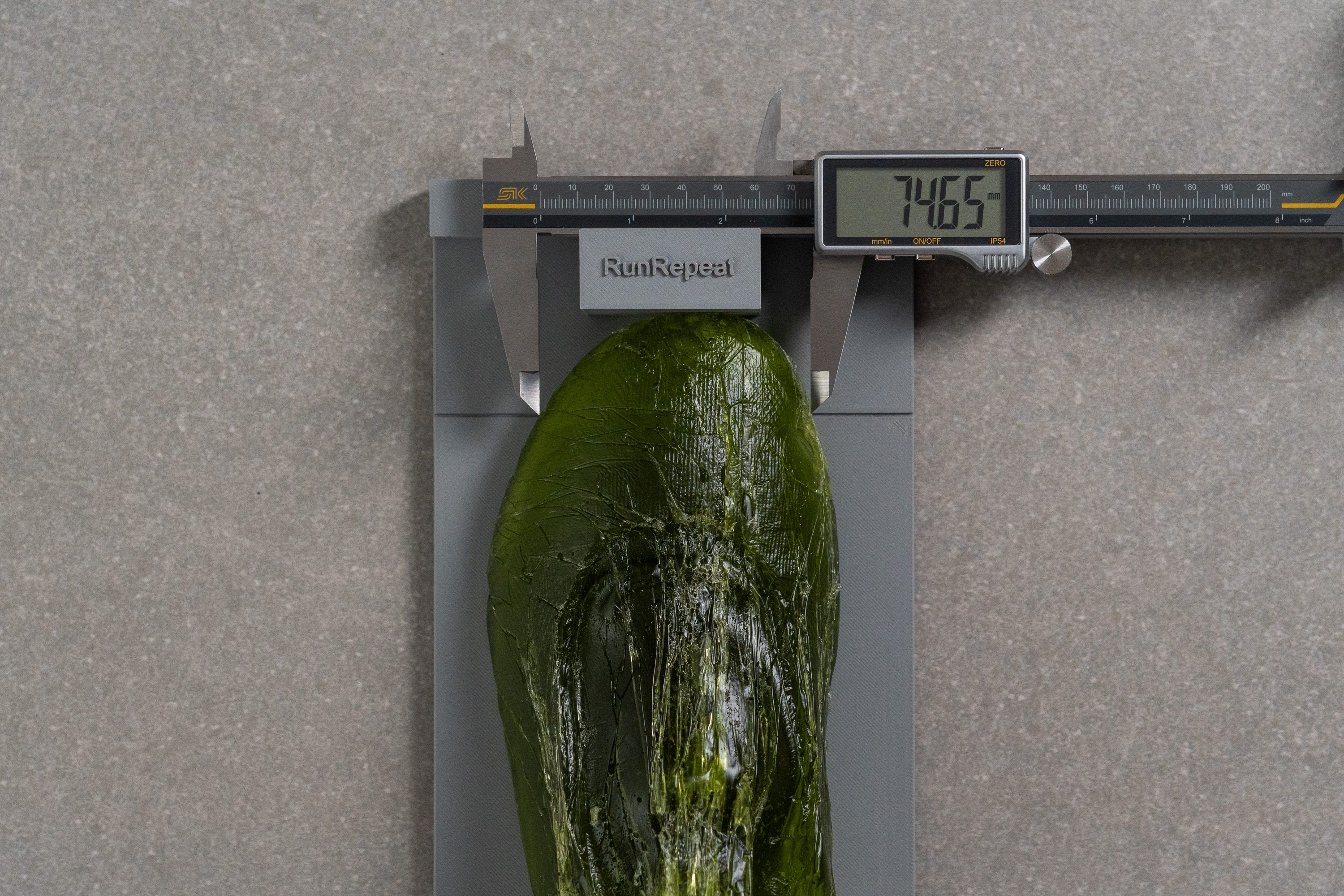
| Ultrarun 5 | 74.7 mm |
| Media | 73.3 mm |
Altura de la parte delantera
This clearly feels like a shoe designed to stay comfy across a wide range of foot shapes.
We registered a generous vertical clearance of 27.5 mm. That's enough room to avoid pressure on top of the toes.
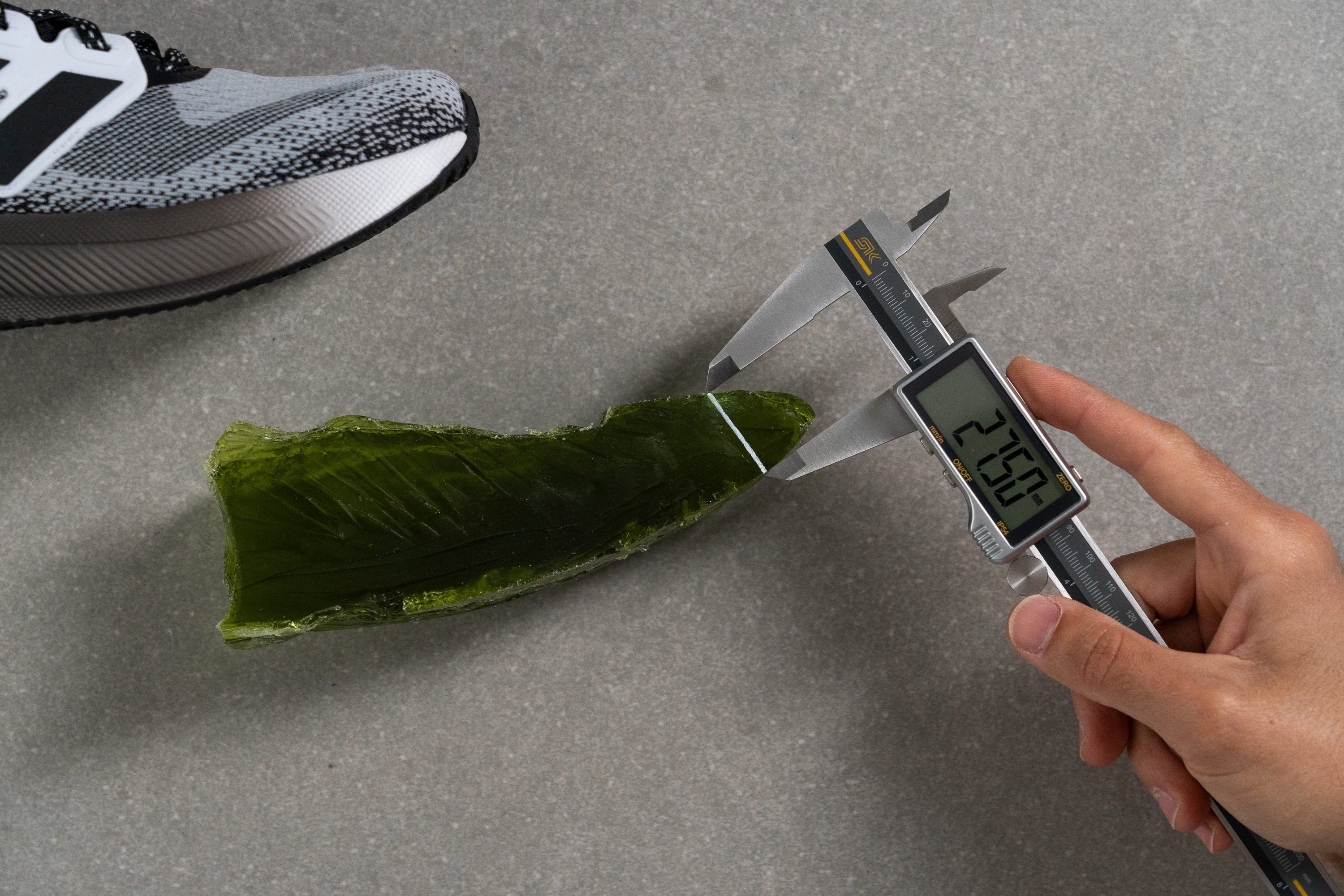
| Ultrarun 5 | 27.5 mm |
| Media | 27.1 mm |
Tracción / Agarre
Traction test
With a 0.41 score, the Ultrarun 5 delivers solid traction on dry roads and decent grip on wet surfaces. While slightly below average, we think it still clears the bar in this test without major issues.
| Ultrarun 5 | 0.41 |
| Media | 0.48 |
Diseño de la suela exterior
The Ultrarun 5 features a dual-colored, Adiwear-based rubber outsole with excellent coverage for enhanced durability. Of course, at this price point, getting Continental or LIGHTTRAXXION was not going to happen.

Flexibilidad / Rigidez
A versatile shoe for daily wear and running needs solid flexibility, and the Ultrarun 5 ticks that box with a 15.0N score in our 30-degree bend test. Still, it’s right at the edge, and those looking for a super-flexible shoe might feel that this one is too stiff.

| Ultrarun 5 | 15.0N |
| Media | 15.3N |
Peso
There’s no hiding that the Ultrarun 5 is on the heavier side at 10.4 oz or 295g. Still, we discovered a nice surprise—our scale showed it was 8% lighter than the official Adidas listing, proving once again why lab-tested numbers are so important before purchasing any running shoe.
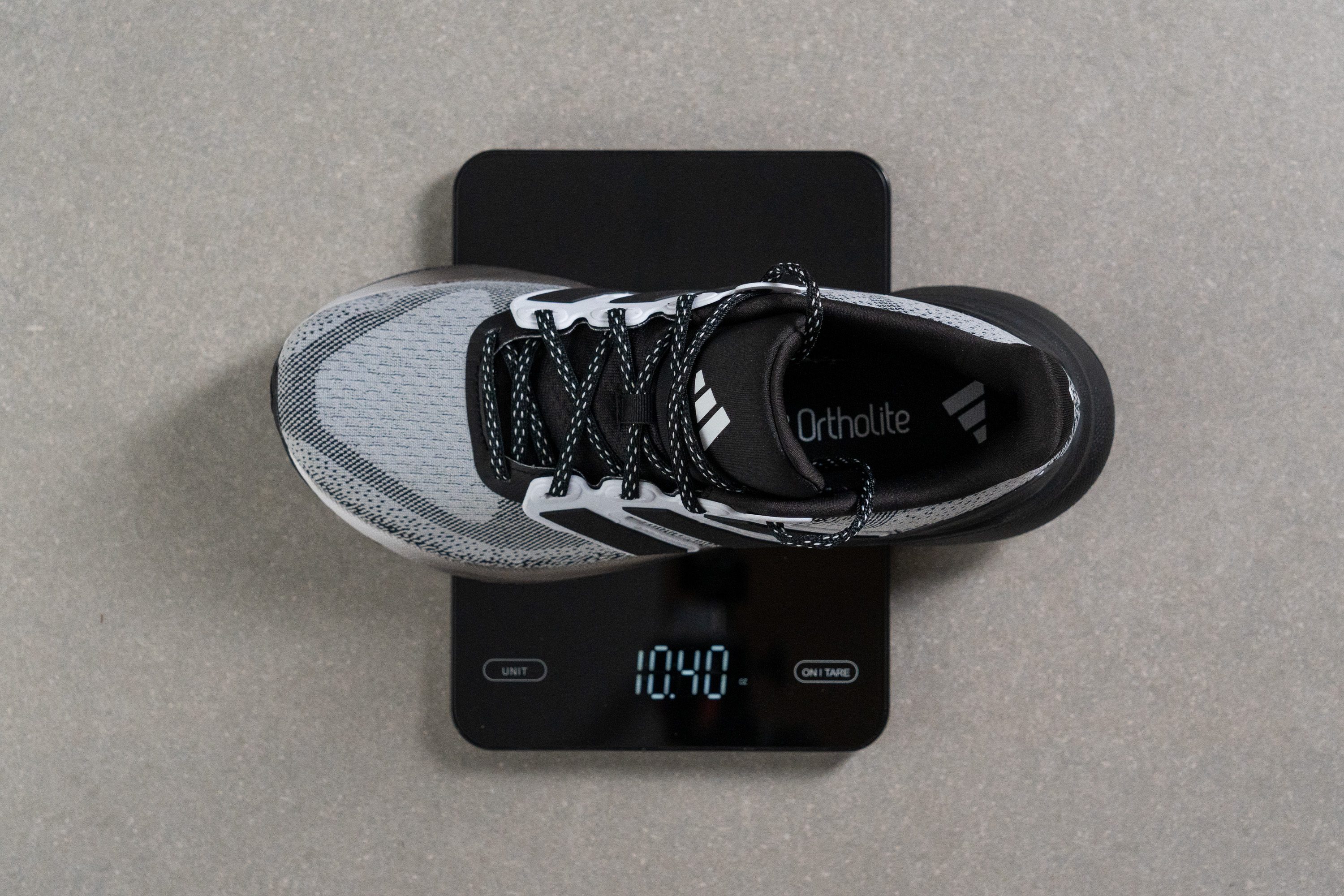
| Ultrarun 5 | 10.4 oz (295g) |
| Media | 9.3 oz (264g) |
Transpirabilidad
The upper of the Ultrarun 5 feels impressively comfortable, especially considering its budget-friendly price tag. Of course, trade-offs come with affordability, and one of them is breathability, which doesn’t reach top-tier levels.
We rated it 3/5, which is fine for most conditions throughout the year. Still, if you're in a hot-weather zone like Texas, airflow might fall short.
Looking through our microscope, we found a thick, comfort-first engineered mesh that clearly favors softness over ventilation.
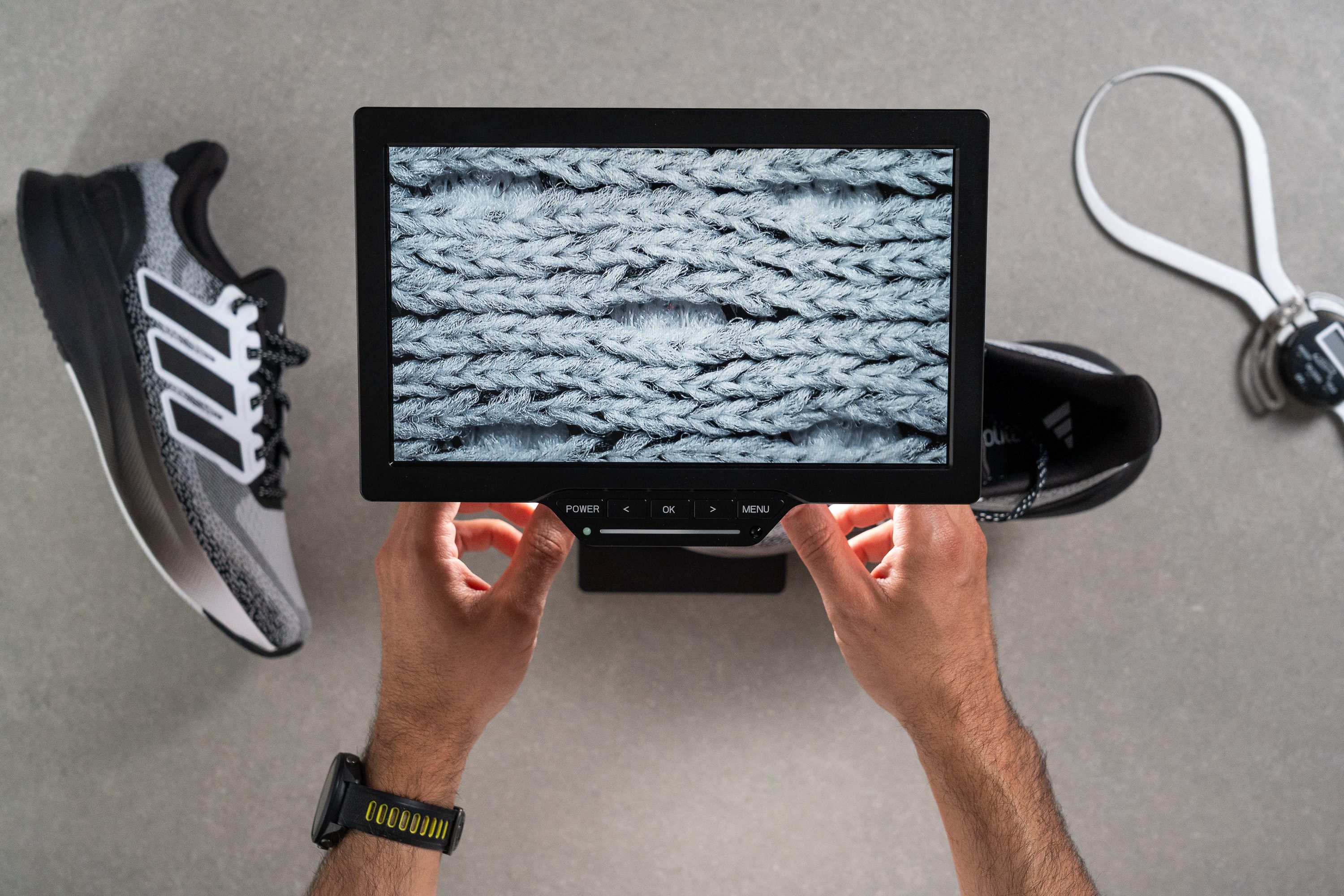
We think that Adidas is assuming many users will walk more than run in these shoes. And they're probably right.
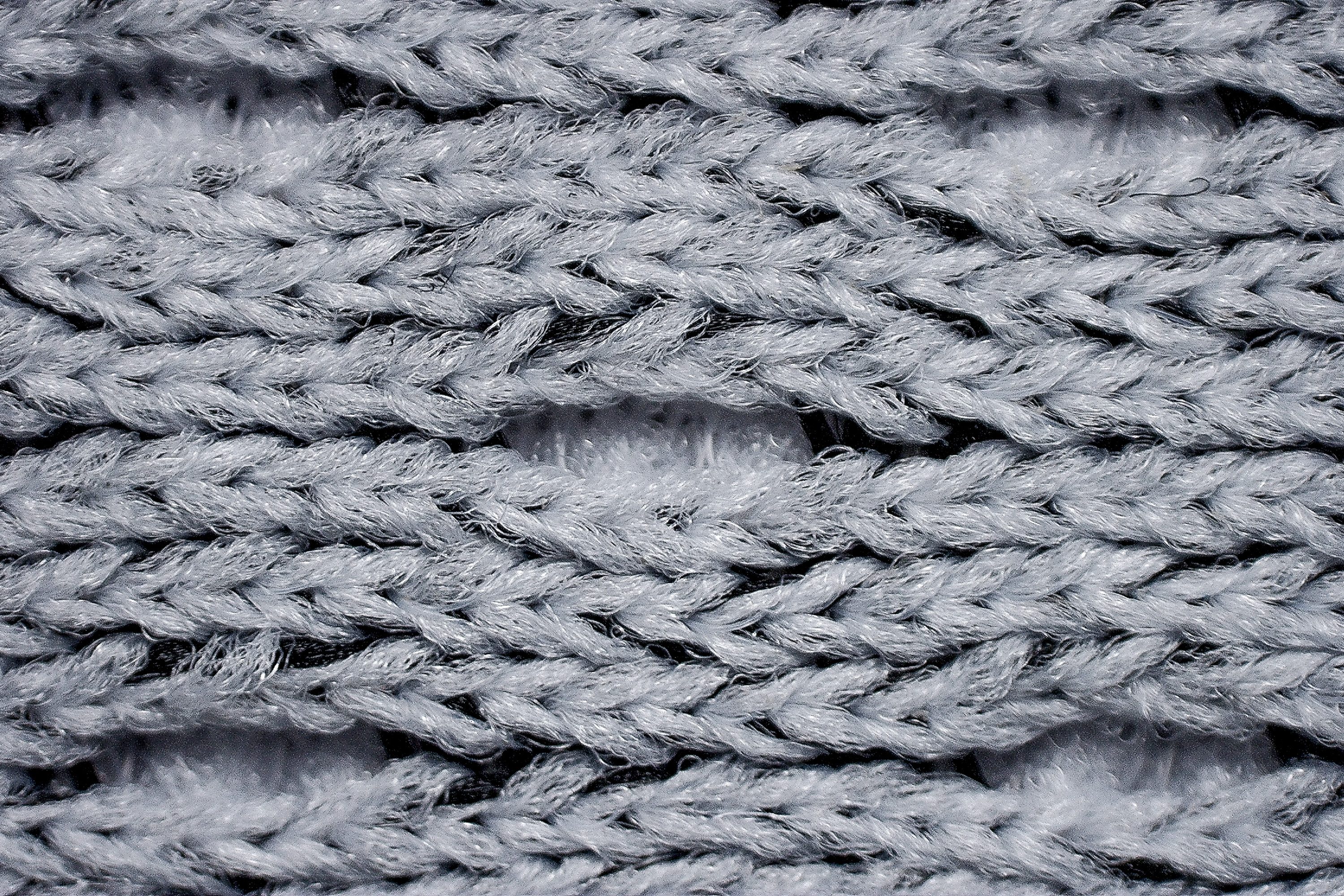
The overall comfort level remains high. There's generous padding in both the tongue and heel, paired with decent materials for the price. If only it allowed a bit more airflow...
| Ultrarun 5 | 3 |
| Media | 3.7 |
Estabilidad
Prueba de estabilidad lateral
The heel counter follows a design nearly identical to what we’ve seen in the Ultraboost series since 2015, with dual plastic heel cups that help secure the heel during landings. While it’s starting to feel a bit dated, the look is really iconic, and Adidas seems eager to keep riding its success.
Rigidez torsional
We twisted the Ultrarun 5 and rated it 3/5 for torsional rigidity, which lines up nicely with its do-it-all purpose—covering everyday errands, relaxed weekend jogs, and some light gym sessions.
| Ultrarun 5 | 3 |
| Media | 3.5 |
Rigidez del contrafuerte del talón
The heel counter earned another middle-of-the-pack 3/5 score, which means it offers enough support for heel strikers without feeling harsh or overly stiff—making it a decent match even for runners sensitive to rigid, firm-built designs.
| Ultrarun 5 | 3 |
| Media | 2.9 |
Anchura de la mediasuela - antepié
Entry-level shoes keep getting roomier in both shape and width, and the Ultrarun 5 fully embraces that trend. We noticed it right away while handling the shoe, then confirmed it with our digital calipers, as it scored 116.4 mm in the forefoot, which is slightly above average.
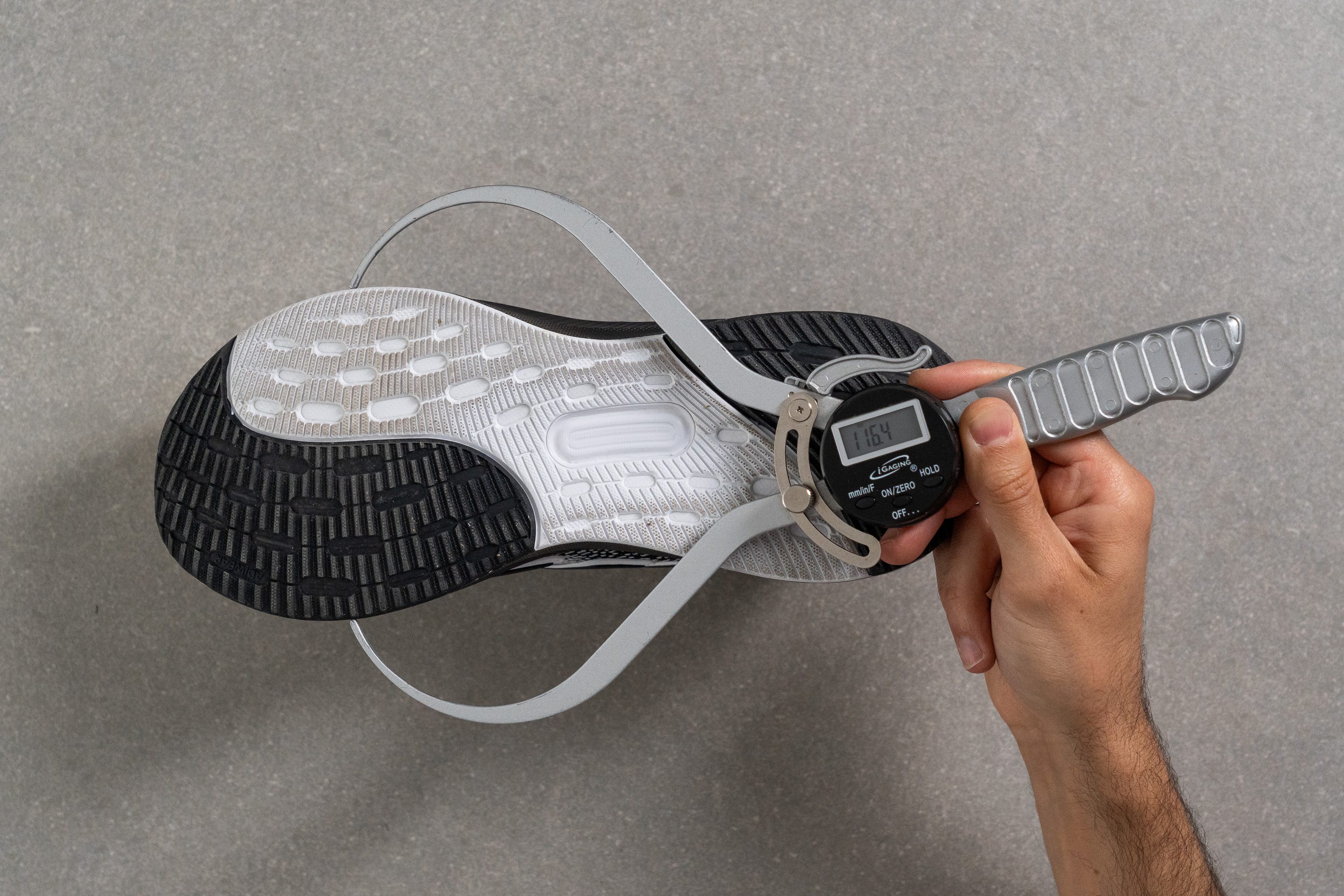
| Ultrarun 5 | 116.4 mm |
| Media | 114.4 mm |
Anchura de la mediasuela - talón
The heel is even broader at 95.3 mm, which aligns perfectly with the intended audience of this shoe—clearly aimed at rearfoot strikers.
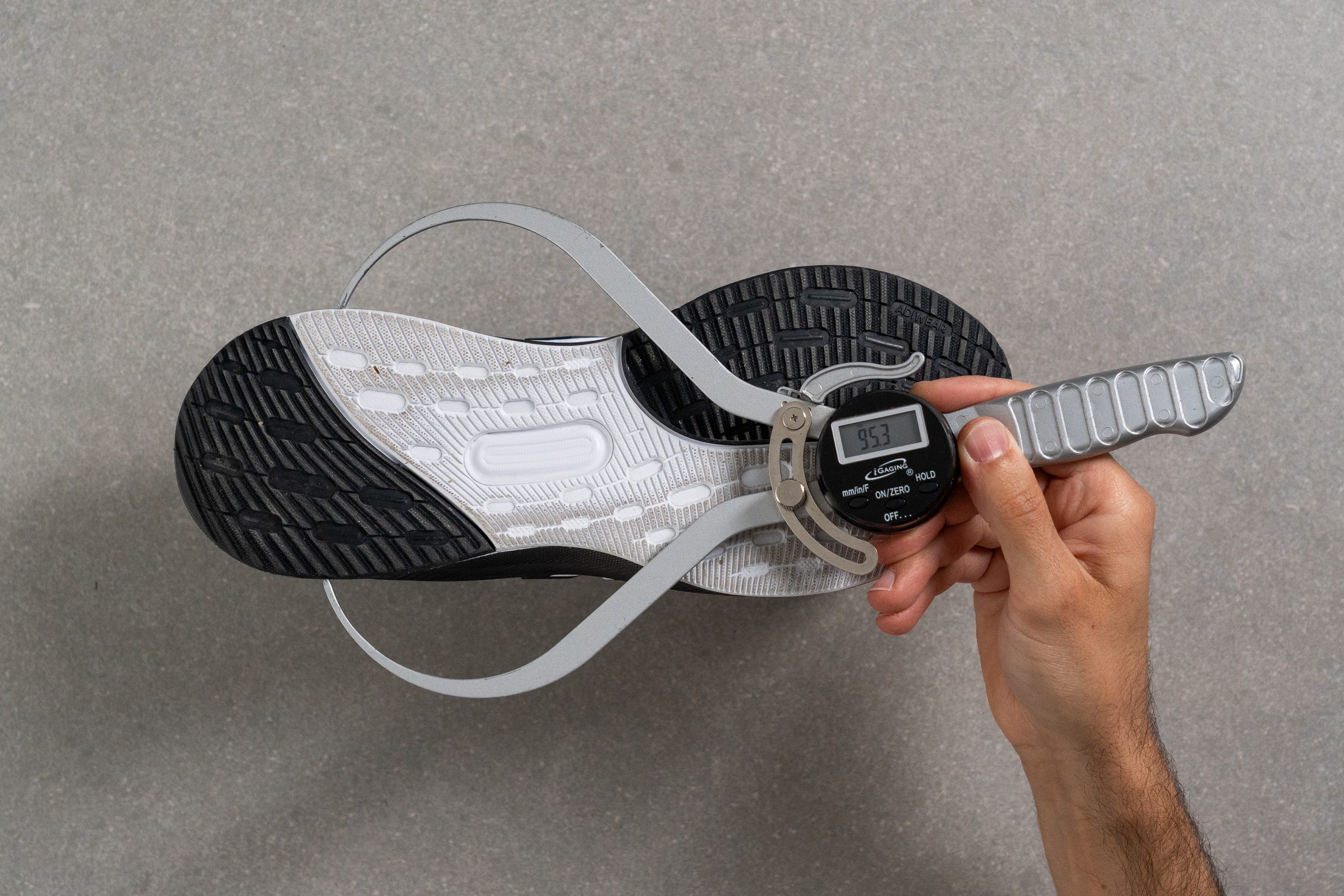
| Ultrarun 5 | 95.3 mm |
| Media | 90.7 mm |
Durabilidad
Durabilidad de la parte delantera
The dense engineered mesh on the Ultrarun 5 held up impressively in our Dremel test, delivering standout abrasion resistance and earning a nice 4/5 score in our lab.
| Ultrarun 5 | 4 |
| Media | 2.6 |
Durabilidad del acolchado del talón
We pushed the Ultrarun 5 to its limits, but it kept showing top-notch abrasion resistance. Even the heel counter held its ground and outperformed expectations with a solid 4/5 score.
| Ultrarun 5 | 4 |
| Media | 3.4 |
Durabilidad de la suela
Adiwear rubber isn’t on par with Continental, but that doesn’t mean it falls short in durability. Our Dremel test left a 1.1 mm dent—nothing remarkable, yet in line with what we’d expect from an entry-level trainer like this one.
| Ultrarun 5 | 1.1 mm |
| Media | 1.1 mm |
Grosor de la suela
At just 2.8 mm, the outsole is slightly thinner than average. Still, Adidas likely made this trade-off intentionally, since the shoe already leans toward the heavier side and any extra rubber would have added even more weight.
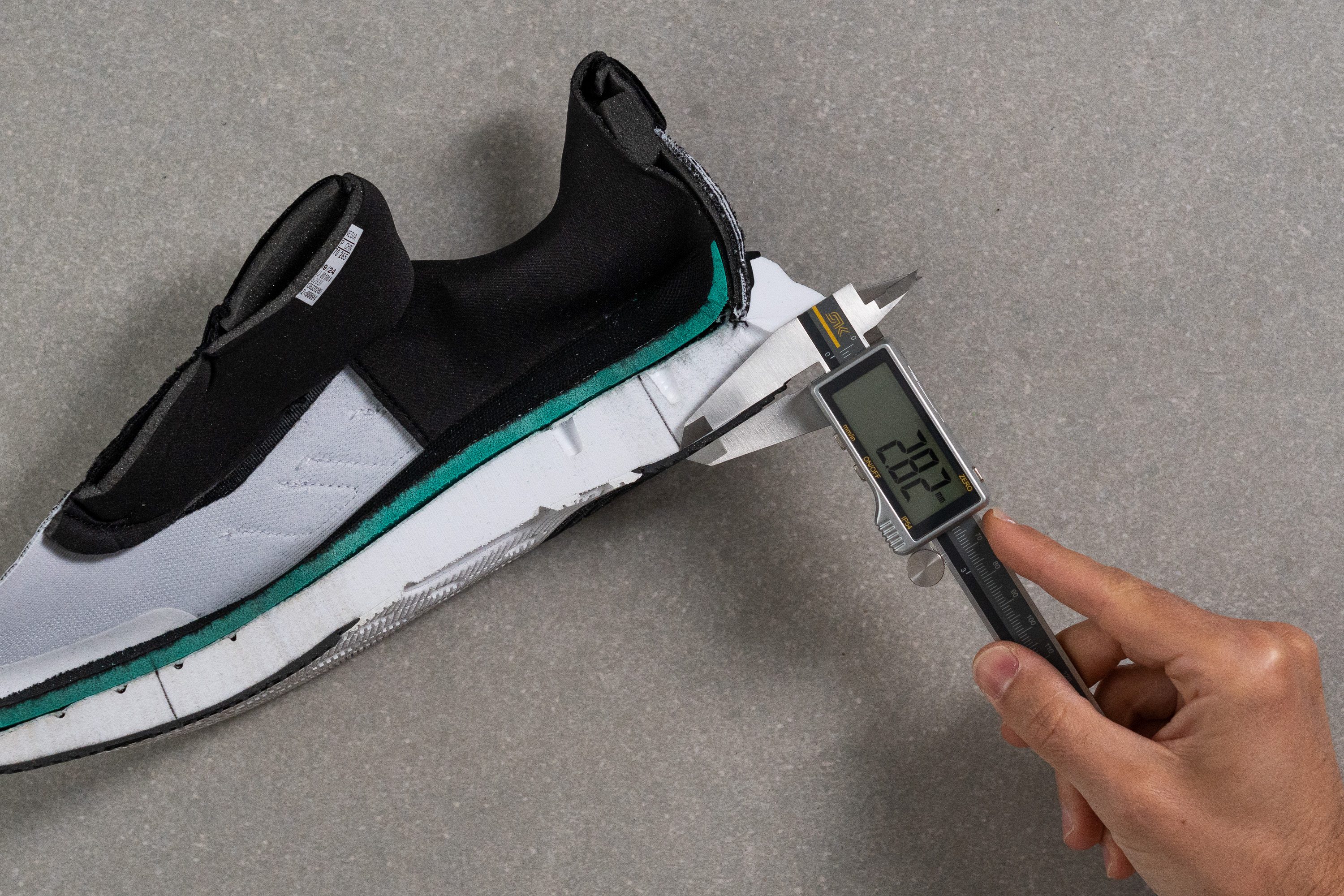
| Ultrarun 5 | 2.8 mm |
| Media | 3.2 mm |
Varios
Grosor de la plantilla
The Ortholite insole is made from EVA foam and stands out with a thick-and-cushy 5.2 mm build, offering a more padded feel than what we usually see in daily trainers.
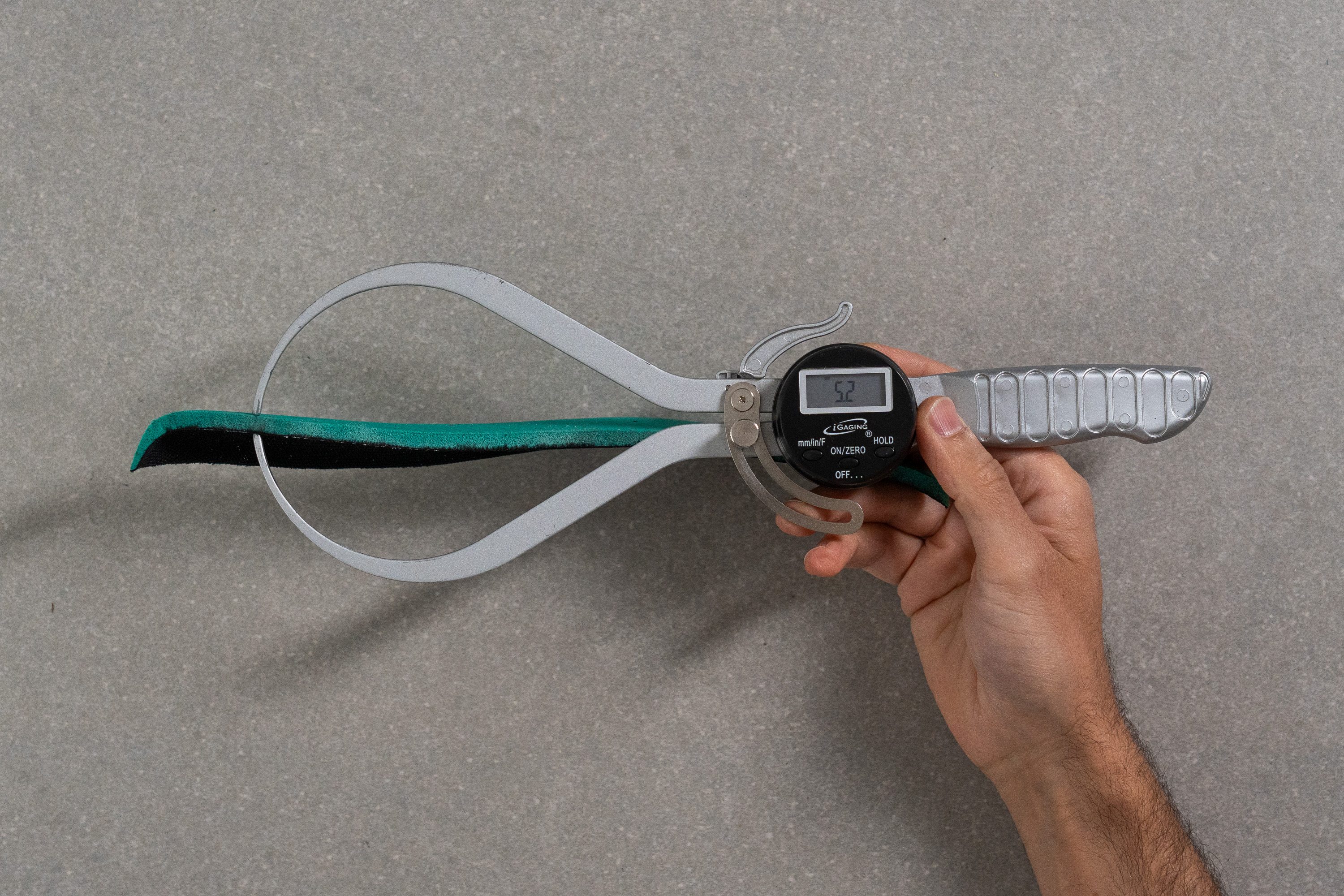
| Ultrarun 5 | 5.2 mm |
| Media | 4.5 mm |
Plantilla extraíble
The Ortholite insole is easy to remove since it’s not glued down, making it simple to swap in your favorite aftermarket alternative.

| Ultrarun 5 | Sí |
Rigidez de la mediasuela en frío (%)
One of the common drawbacks of EVA-based foams is their cold sensitivity—they usually get stiffer in low temperatures compared to PEBA or TPU. True to form, the Ultrarun 5 became 30% firmer after we left it in the freezer for 20 minutes.
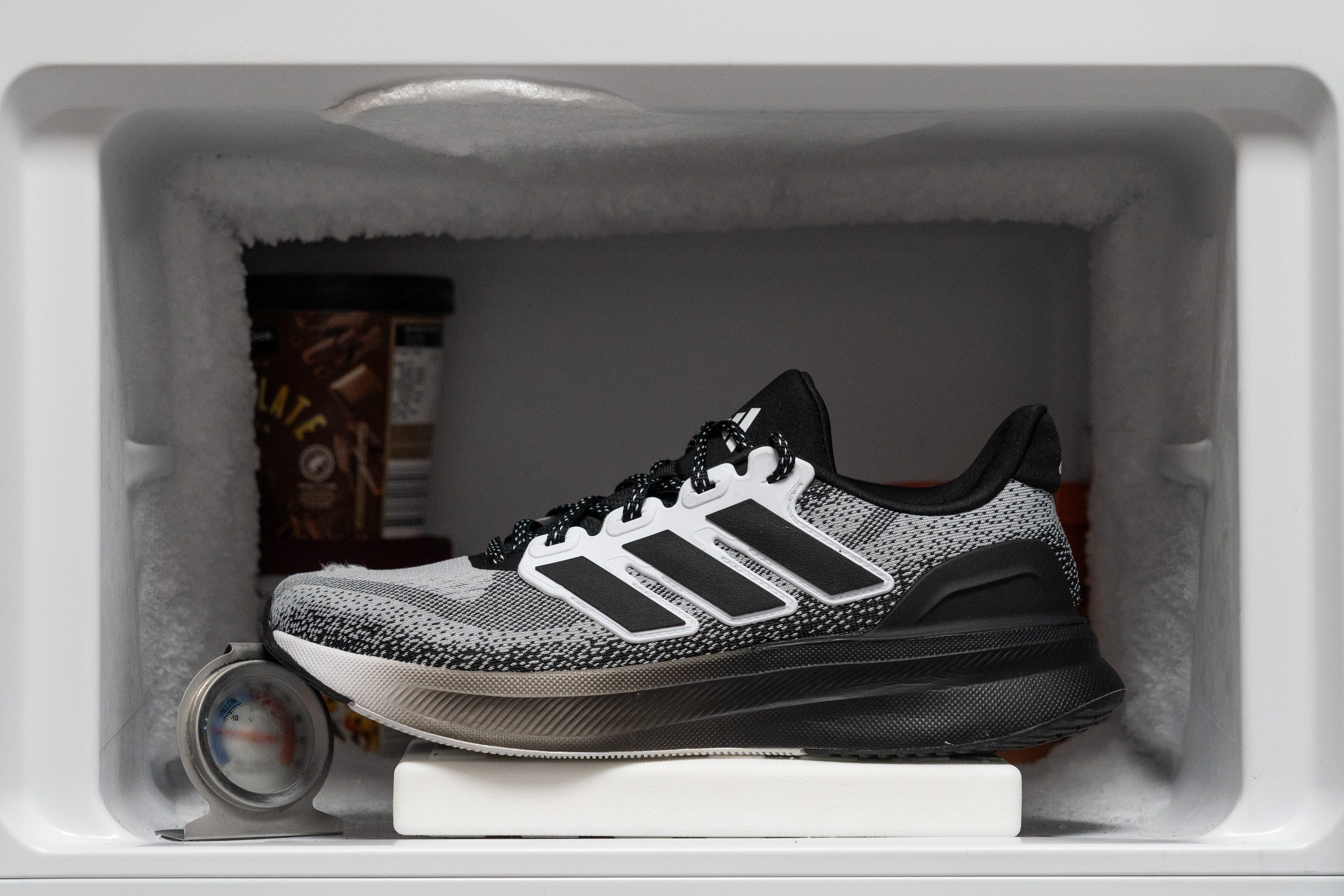
| Ultrarun 5 | 30% |
| Media | 24% |
Elementos reflectantes
Since the higher-priced models in Adidas' Ultra lineup skip reflective details, it made little sense to expect them in this cheaper version.
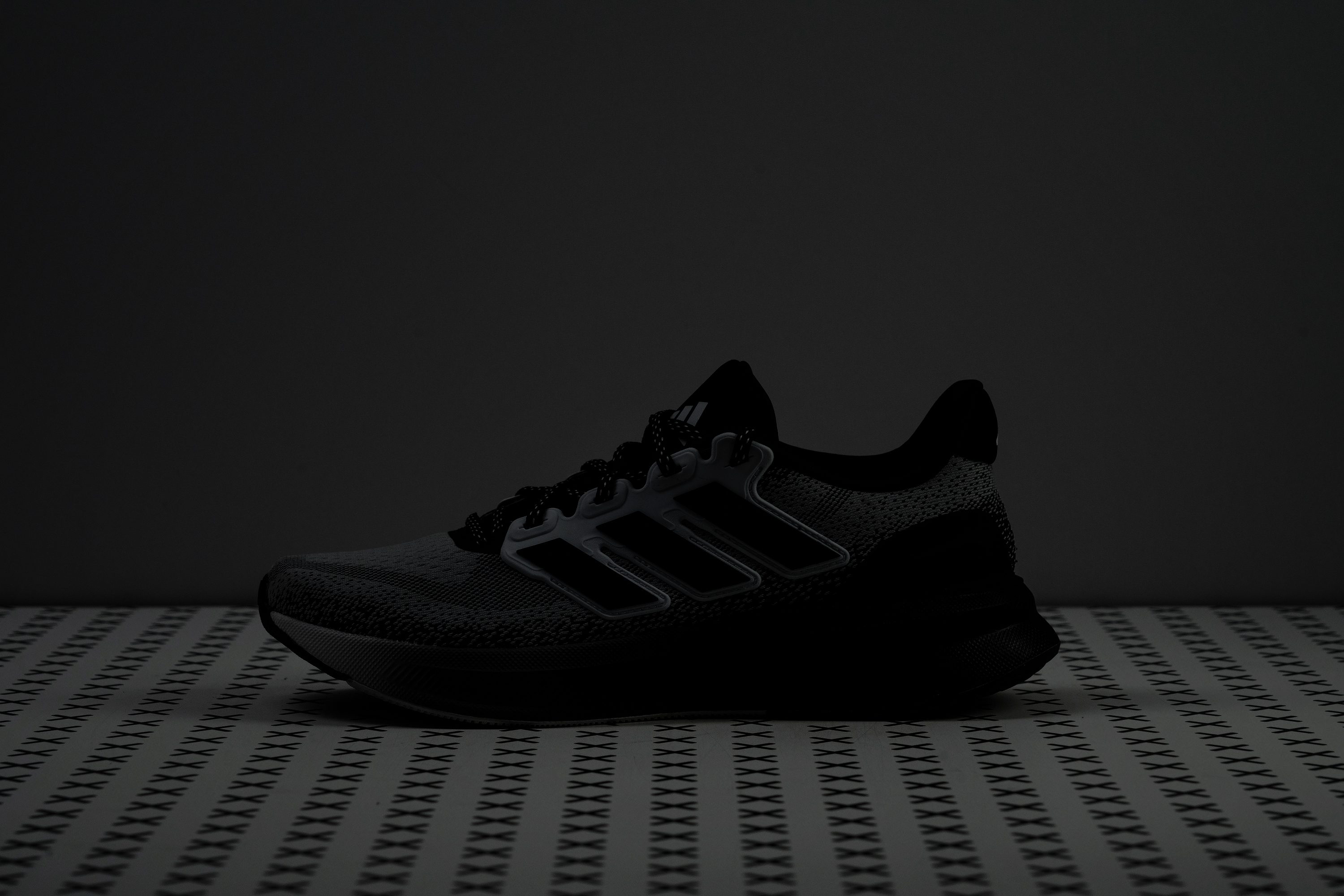
| Ultrarun 5 | No |
Acolchado de la lengüeta
We discovered another familiar design cue borrowed from the Ultraboost playbook—Adidas' signature lacing cage that integrates the iconic three stripes. This plastic piece adds structure and long-lasting support to the shoe.
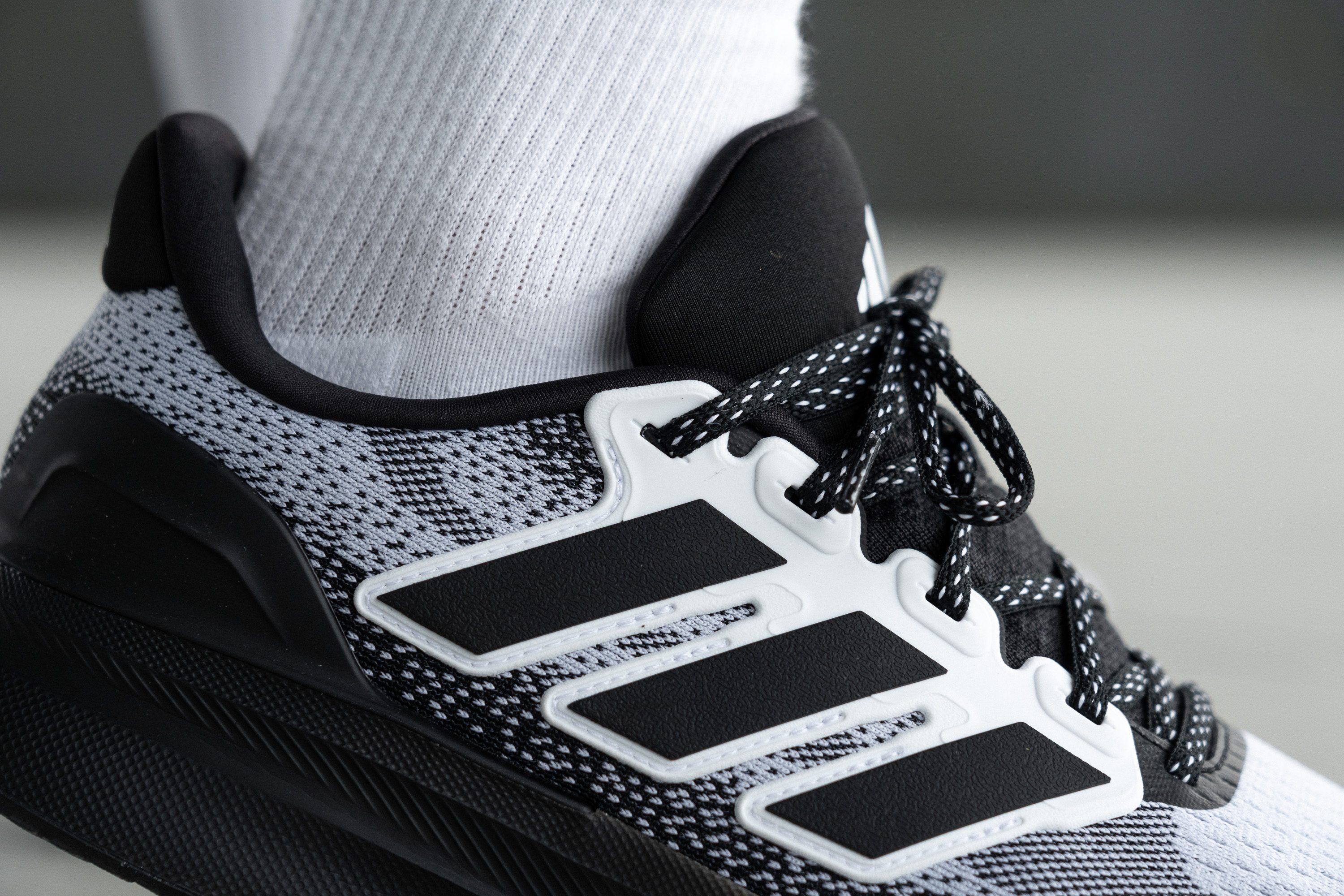
What stood out even more was the ultra-plush tongue, which we measured at a whopping 11.5 mm. While it adds a premium-feel illusion, we think it's overdone. From our perspective, anything above 7 or 8 mm brings little comfort gain but adds unnecessary weight in an already heavy-feeling build.

| Ultrarun 5 | 11.5 mm |
| Media | 5.8 mm |
Lengüeta: tipo de refuerzo
Like many budget-conscious running shoes, this one cuts corners by leaving the tongue unattached to the upper. At this price, though, we don’t see much reason to complain.
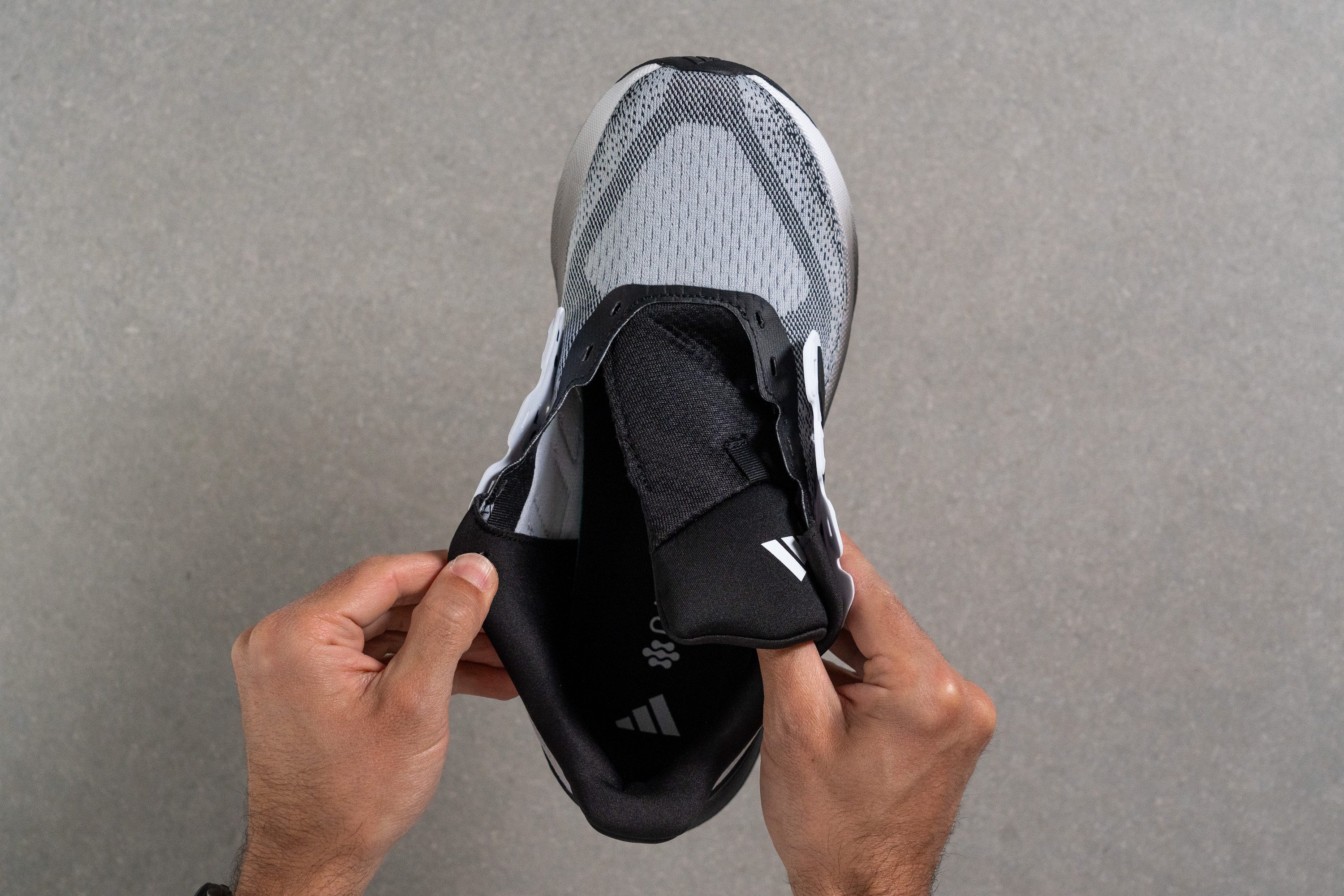
| Ultrarun 5 | Ninguno |
Precio
One of the main appeals of the Ultrarun 5 is its wallet-friendly price. It lands far below the cost of most daily trainers—and especially the Ultraboost line. While Adidas clearly trimmed down quality and bounce, we believe it delivers far better value than its pricier siblings.
| Ultrarun 5 | $80 |
Tirador del talón
We discovered during testing that the shoe includes the signature extended heel collar seen in its premium sibling, the Adidas Ultraboost 5. This comfy element not only cushions the Achilles but also adds support when stepping into the shoe, as it works like a small pull tab, making it easier to slide your foot in.
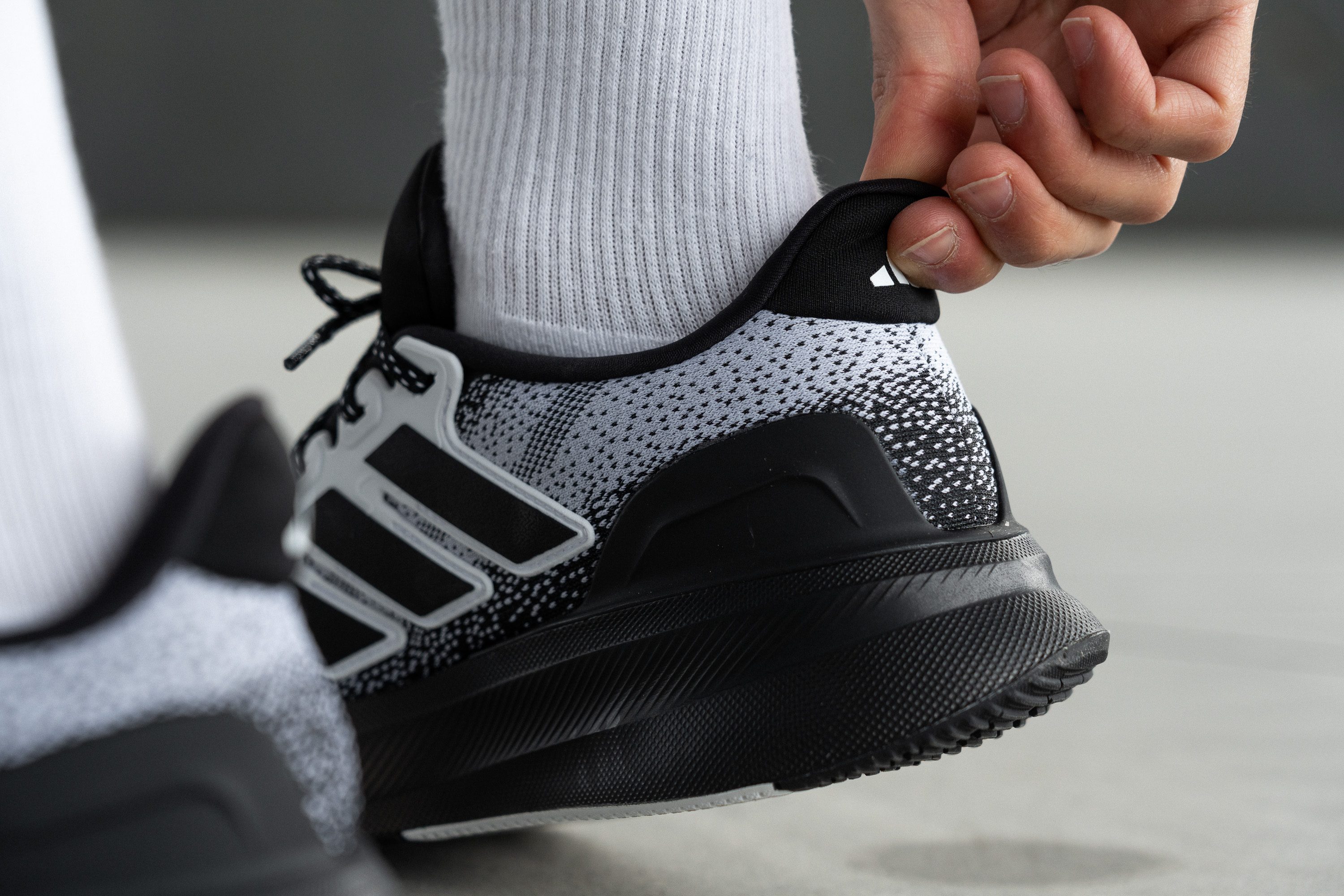
| Ultrarun 5 | Talón extendido |

